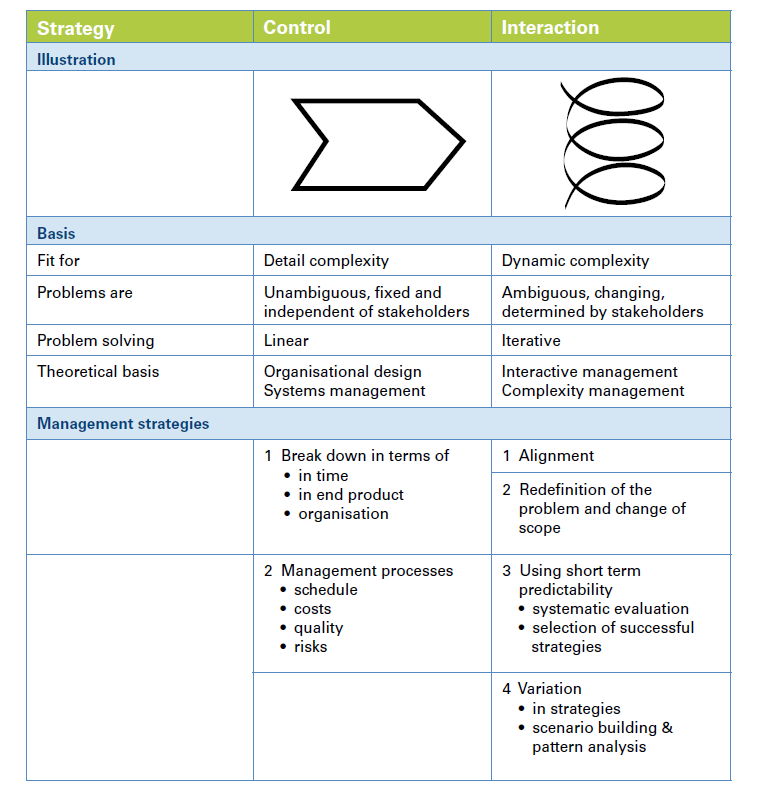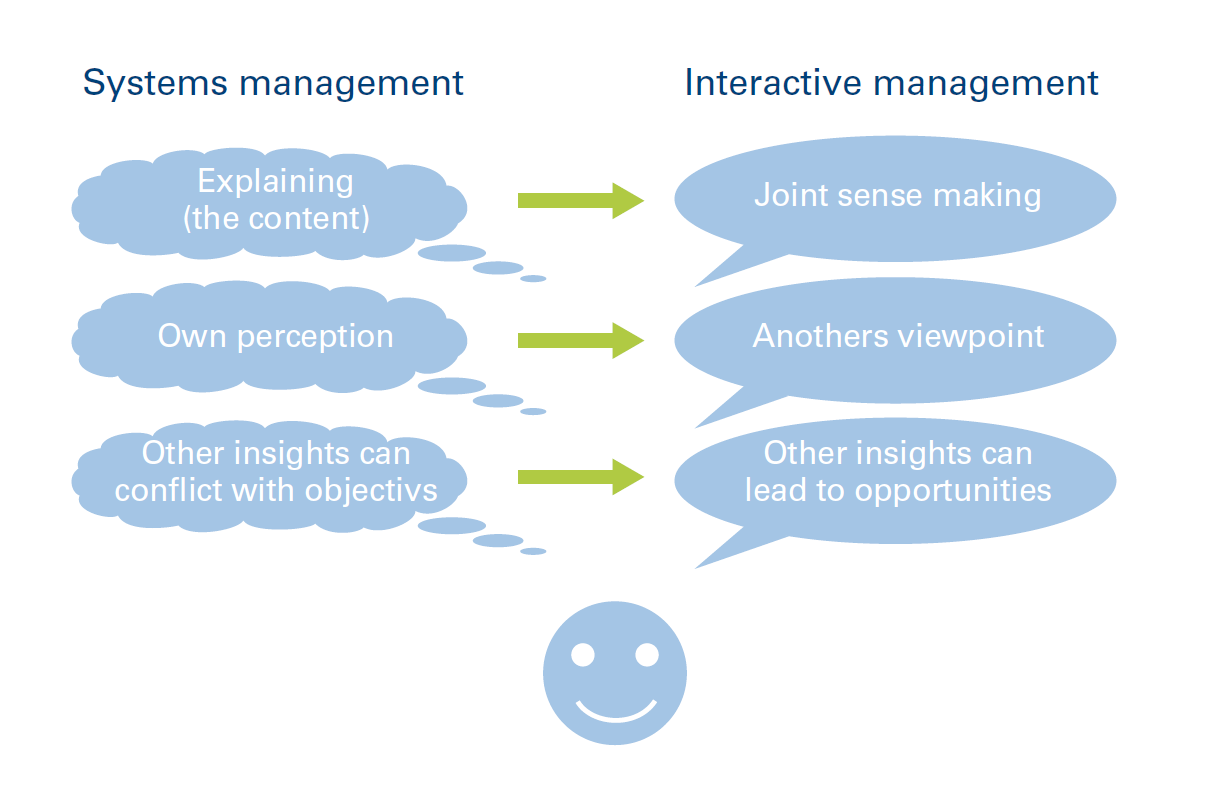4.2.3 Finding the best fit?
Course subject(s)
Module 4. Mastering project complexity
You have learned about the different management approaches in Module 3, let’s recap by means of the figure below (Hertogh and Westerveld, 2010, Table 5.8 on page 232).

Although “one-size-does-not-fit-all“, there are some suggestions about what approach fits best in which situation.
In Hertogh and Westerveld (2010), it is indicated that:
Control fits when:
-
- (Sub)problems can be isolated.
- There is a consensus between players about preferred solutions.
- The number of involved players can be reduced.
- Stakeholders have the same interpretation of project facts.
- Questions of power are less relevant.
Interaction fits when:
-
- Many players are involved with different interests.
- Players have a large degree of autonomy, there is an incomplete hierarchy.
- Mutual dependencies between involved players.
- Unstructured problems.
- Interwoven issues.
- Unpredictable decision making process.
- Deadlock in project progress.
What does this mean in todays’ projects where we hardly can find isolated problems and aligned stakeholders? Probably that we have to seek for “interaction”, more than typical engineers are used to do. How we can move from systems management (control) to more interactive management (interaction) is displayed below (Hertogh & Westerveld, 2010, Figure 9.8 on page 337).

It is about opening up: asking for ideas rather than repeating your explanation over and over again. It is about trying to understand the other’s viewpoint, rather than sticking to your own vision. It is about recognizing opportunities, rather than threats. But…..you can only act if you are aware of what is happening in and around your project!
For finding a fit between management approach and complexity, first you need to be aware of the complexities you could face in your project. We concluded from earlier research (Bosch-Rekveldt, 2011) that engineers typically can cope with technical complexities (since they have learned how to deal with these), they seem to neglect the external complexities (because they are not aware of these) and they typically get headaches from organizational complexities (because these complexities are troubling their day-to-day business). Increasing awareness and recognizing complexities in all areas is therefore assumed to positively influence project performance!

Project Management: mastering complexity by TU Delft OpenCourseWare is licensed under a Creative Commons Attribution-NonCommercial-ShareAlike 4.0 International License.
Based on a work at https://ocw.tudelft.nl/courses/project-management-mastering-complexity/.



